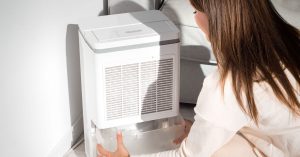Air pollution is a well-established public health concern. Air pollution’s relationship with asthma flare-ups, chronic respiratory illnesses, and skin health tends to be pretty obvious and easy to trace. However, the effects of air pollution on our mental health takes longer to develop and even longer to identify.
This is especially harmful when it comes to children’s mental health. Children are resilient but constant stress on their physical and mental health can result in real and lasting consequences, but it might take weeks or even months to figure out something is wrong. These factors make it difficult to clearly establish a relationship between environmental issues, like air pollution, and a child’s mental health. However, a recent study published in the Environmental Health Perspectives Journal shows that even short-term exposure to air pollution can cause a spike of depression, anxiety, and behavioral problems in children.
Children’s Mental Health-Air Pollution Study
The Children’s Mental Health-Air Pollution Study was published in 2019. It followed all Emergency Department visits for psychiatric reasons at the Cincinnati Children’s Hospital Medical Center in Cincinnati, Ohio, for a period of five years. This accounted for 13,176 visits.
The frequency of these visits was then contrasted with the city’s humidity levels, pollution levels, and temperature levels of the exact day on which they occurred. They found no link between extreme temperatures or unusual humidity and psychiatric ER visits. However, on days where airborne particulate matter (that is, the presence of pollution floating in the air) was above average, children were more likely to visit the ER due to psychiatric symptoms.
This association was particularly strong for children who lived in poorer neighborhoods, close to the city’s industrial center.
Most ER visits corresponded to children with long-term psychiatric problems who were having acute flare-ups of their symptoms. Most of these children were struggling with:
- Depressive disorders
- Personality disorders
- Post-traumatic stress disorders
- Schizophrenia
- Suicidal thoughts or urges
Researchers also noticed that on many days, the “spikes” in air pollution were still below what the U.S. Environmental Protection Agency (EPA) would consider as a “high pollution” day. Yet, these “normal” levels of pollution were enough to correlate with more children arriving at the ER.
Where Is This Pollution Coming From?
In addition to temperature and humidity levels, this study tracked two types of air pollution: particulate matter and fine particulate matter.
Fine particulate matter is pollution composed of tiny particles, usually under 2.5 microns in size. Unlike regular dust or ashes, fine particulate matter can be easily inhaled. It is also small enough to make its way through lung tissue and into the bloodstream.
Common sources of fine particulate matter include:
- Combustion engines, such as the ones from cars
- Nearby factories or smelting operations
- Coal and oil boilers
- Waste or dumpsites
- Volatile organic compounds (VOCs) that emanate from everyday household products.
Why Are Children Affected from Air Pollution?
The effects of the pollutants we listed above tend to harm children in a particular way. This is partly because children breathe more than adults, with an average of 22 to 34 breaths per minute. For comparison, an adult usually breathes rather than 12 to 16 times per minute. Plus, their smaller bodies make it easier for toxins to accumulate.
What Can You Do To Protect Your Family from Air Pollution?
The following simple strategies will help you protect your children:
- Monitor air pollution levels
Pay attention to Air Quality Index forecasts for your area, at least every week. These forecasts will let you know which days will be particularly loaded with pollen, VOCs, and ashes.
- Stay indoors when outdoor pollution is high
If a day is listed as “Unhealthy for sensitive groups” or darker, it’s best to cancel any outdoor activities for the day. Instead, try to keep your children in a room with filtered air.
- Use environmentally-friendly cleaning products
Minimize your kid’s exposure to indoor pollutants by switching to environmentally-friendly products that don’t produce additional VOCs. Look for products with a Safer Choice label whenever possible.
- Get a HEPA or PECO filter
Most people with asthma or respiratory allergies often use a HEPA filter to clean the air inside their house. This will be particularly important on “unhealthy” air quality days. If a HEPA filter is good, a PECO filter could be better. These filters can remove particles as small as .1 nm. Read this study to learn more.
Raising a child with frail mental health is no easy task. A great way to manage pediatric depression, schizophrenia, or PTSD is to look out for potential triggers and minimize their occurrence. Poor air quality is a frequently overlooked one – but recent studies believe it could be significant.
Think differently about your health with Society of Wellness. Get your free health assessment here.







